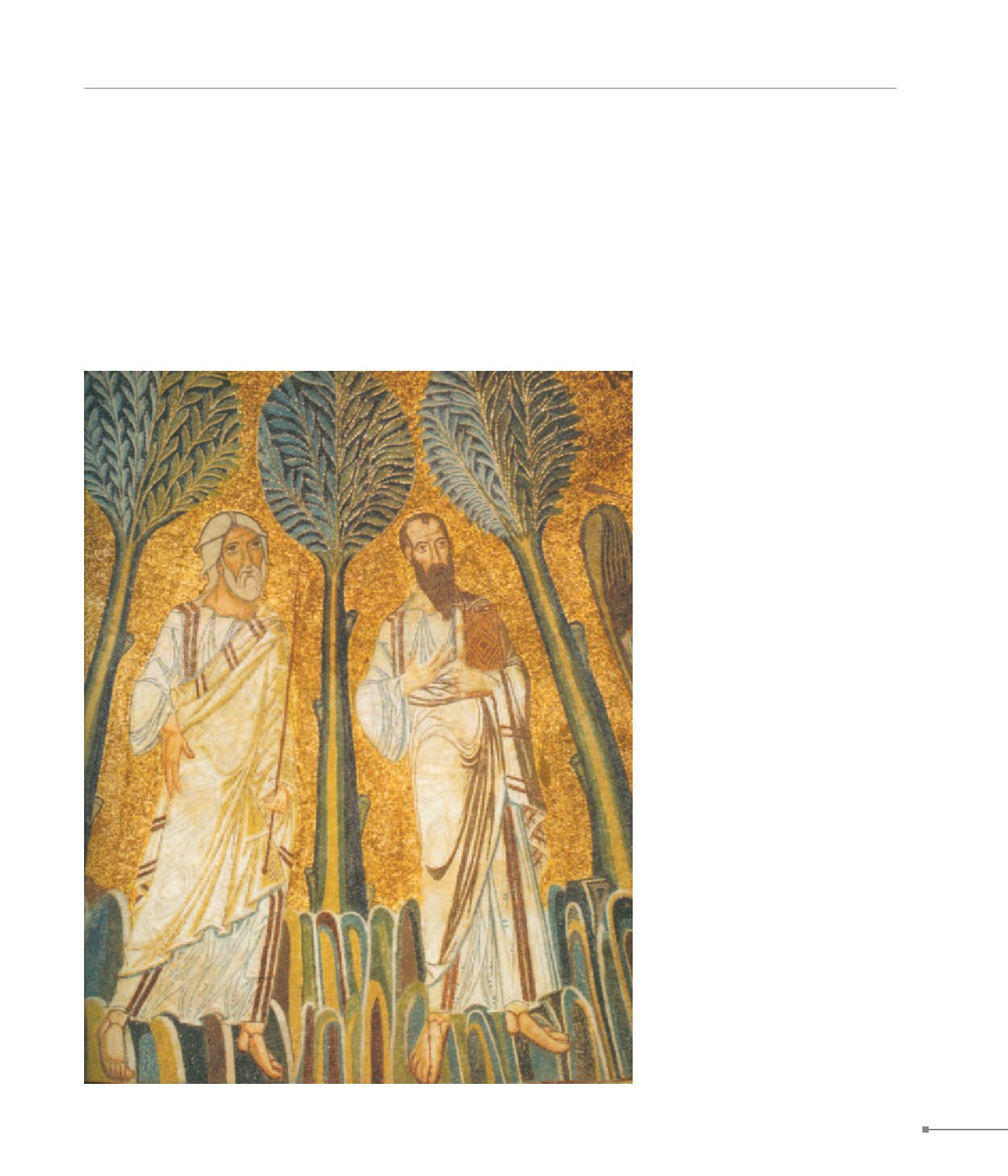
Thessaloniki.
Thessaloniki.
MACEDONIA
135
by the Saracins of Leo of Tripolis in 904. In the 10th c. the small,
three-aisled basilica of Aghios Euthymios was erected at the
SE corner of Aghios Demetrios, and in the late 10th-early 11th
c. the Akapniou monastery was founded by Basil II Boulga-
roktonos. In 1028 the complex cross-in-square church of Pan-
agia Chalkaion, with painted decoration of the same period,
was erected by Christophoros, katepano (a military official) of
Lagouvardia. In the first half of the 11th c. (after 1037), follow-
ing a devastating earthquake, Aghia Sophia was renovated
and underwent significant architectural alterations (elevation of
112. Thessaloniki, Aghia Sophia, mosaic
(Θεσσαλονίκη, Αγία Σοφία, ψηφιδωτό)
galleries, raising of the W wall, addition of an exonarthex), and
the application of wall-paintings to its narthex. In this church,
the mosaic decoration of the conch of the apse dates from the
11th-12th c. The painted decoration of the catholicon of the
Latomos monastery (Hosios David) dates to the third quarter of
the 12th c. The flourishing spiritual and artistic life of the city was
interrupted in 1185 by the conquest of the Normans.
In 1204 Thessaloniki passed to the Frankish sovereign Boniface
of Montferrat. After the withdrawal of the Franks (1224) the S
aisle of the church of Panagia Acheiropoietos was decorated


